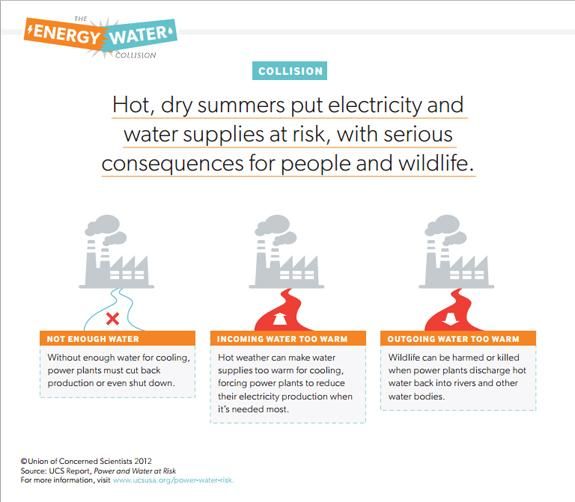41% of Water in the US is Used for Power Generation
The Union of Concerned Scientists describes how warming and drought can cause problems for power generation
/https://tf-cmsv2-smithsonianmag-media.s3.amazonaws.com/filer/2012080302300708_03_2012_us-water-use-1.jpg)
The US uses more water to generate power than to grow all our food (and, in the case of ethanol, fuel). In a year plagued by a drought that, in a climate-changed world, represents the “new normal,” that’s a liability. So the Union of Concerned Scientists created an infographic to explore the issues that will arise as energy, food, city dwellers, farmers and frackers fight over a limited supply of water.
The group decided to highlight what they call “collisions.” For instance, when water is used for drinking or agriculture and drought or development means there’s not enough left behind to cool power plants. As a result, these under-cooled plants cut back, limiting energy supply.

Though not a perfect parallel, the recent massive blackouts in India were at least partly motivated by water supply issues. For a more nuanced view of the stability of the US’ energy grid, Maggie Koerth-Baker, who recently wrote a book on the issue, has two columns: “Blackout: What’s wrong with the American grid,” and “Meet the people who keep your lights on.”
The Union of Concerned Scientists’ graphic also maps regions around the US that have already ran into power production/water supply issues, and shows how they think we can avert similar future problems by increasing our use on means of energy production that aren’t reliant on external cooling.
(hat tip to Heidi Cullen)
More from Smithsonian.com:
/https://tf-cmsv2-smithsonianmag-media.s3.amazonaws.com/accounts/headshot/smartnews-colin-schultz-240.jpg)
/https://tf-cmsv2-smithsonianmag-media.s3.amazonaws.com/accounts/headshot/smartnews-colin-schultz-240.jpg)